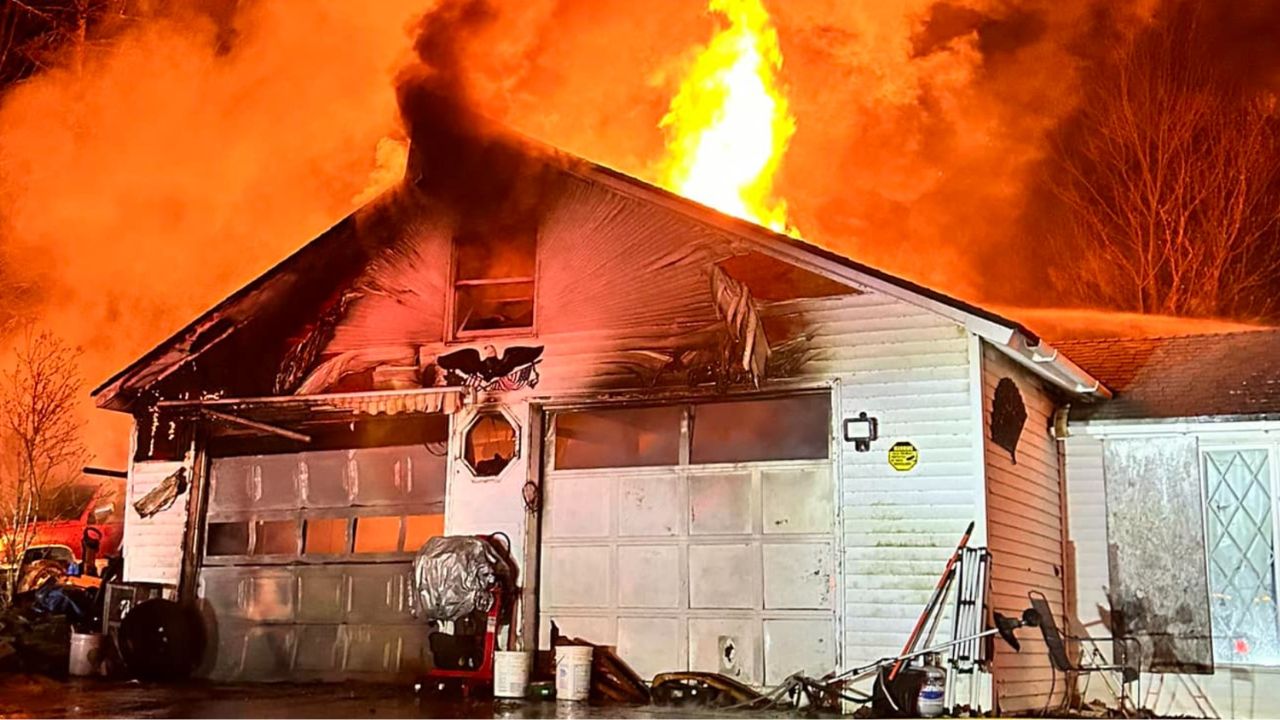An early-morning garage fire in Peru tore through a residential property before sunrise, destroying the garage and damaging the attached home despite a swift response from firefighters. Neighbors reported flames and heavy smoke in the pre-dawn hours, prompting a multi-agency turnout.
Crews arrived to find the garage fully involved, with heat impinging on the home’s exterior and the risk of extension into the living space.
Firefighters executed a fast, coordinated attack to knock down the flames, protect exposures, and ventilate the structure.
As of the morning update, the cause is under investigation, and officials are assessing the full scope of structural and smoke damage.
No serious injuries were immediately reported, and residents were evaluated on scene as a precaution.
Key Facts at a Glance
| Detail | Update |
|---|---|
| Incident Type | Residential garage fire with extension to home |
| Timing | Early morning (pre-dawn hours) |
| Location | Peru (residential neighborhood) |
| Primary Loss | Garage: total loss |
| Secondary Impact | House exterior damage (siding/eaves), smoke intrusion |
| Injuries | No serious injuries reported at scene |
| Response | Local fire department with mutual aid and EMS standby |
| Utilities | Power/gas checked and secured for safety |
| Status | Cause under investigation; overhaul and damage assessment ongoing |
How the Fire Spread So Fast
Garage fires often escalate rapidly because the space commonly stores vehicles, gasoline, propane cylinders, paints/solvents, and lithium-ion tools or e-bikes—materials that increase heat release rate and can cause popping noises or pressure events.
When a garage is attached or close to a home, flames and radiant heat can quickly compromise siding, soffits, and attic openings, allowing hot gases or embers to find their way inside.
In this incident, crews prioritized exposure protection—cooling the home’s exterior, checking the attic and interior walls for hidden fire, and conducting thermal imaging to root out hotspots.
Their quick work kept the worst of the damage confined to the garage while limiting the home’s structural impact.
What Firefighters Did Right
- Fast knockdown: A blitz attack on the garage fire prevented full structural involvement.
- Exposure control: Hose lines and targeted cooling protected siding, eaves, and nearby structures.
- Ventilation & overhaul: Positive pressure and careful ceiling pulls helped release trapped heat and smoke and revealed smoldering spots.
- Utilities secured: Crews coordinated shutoffs to eliminate additional hazards.
These tactics, paired with mutual-aid tankers/manpower if needed, are the difference between partial damage and a total loss during off-hour fires.
Homeowner Checklist After a Garage Fire
If you live nearby or were affected, run through this list with your insurer and contractor:
- Document everything: Photograph the garage interior, vehicles, stored equipment, and any smoke-affected rooms in the home.
- HVAC & electrical checks: Have a licensed tech inspect furnaces/air handlers and ductwork for soot; replace filters and consider duct cleaning. An electrician should inspect panels, circuits, and any heat-exposed wiring.
- Structural inspection: Ask contractors to check sheathing, rafters, soffits, and attic insulation for heat or smoke damage.
- Contents triage: Segregate cleanable vs. non-restorable items; porous contents soaked in smoke may require professional restoration.
- Battery storage habits: Relocate lithium-ion batteries (power tools, e-bikes) to non-living spaces on non-combustible surfaces and use manufacturer-approved chargers only.
- Propane & fuels: Store cylinders outdoors and keep gas, solvents, and paints in ventilated, cool areas away from ignition sources.
Prevention: Small Changes, Big Risk Reduction
- Heat alarms in garages: Unlike smoke alarms (which can false-alarm due to exhaust), rate-of-rise/heat alarms catch rapid temperature increases.
- Self-closing interior door: Ensure the door between garage and house has a self-closer and adequate weather-stripping to slow smoke migration.
- Clear a 3-foot safety zone: Keep combustibles away from water heaters, chargers, and space heaters.
- Smart charging: Avoid overnight or unattended charging of e-bikes/power tools; use UL-listed equipment.
A pre-dawn fire in Peru left a garage destroyed and a home damaged, but a swift, coordinated response prevented a full structural loss.
While the cause remains under investigation, the event is a timely reminder: garages often house high-energy fuels and batteries, and simple steps—heat alarms, smart battery storage, clear space around heaters, and secure doors—can dramatically reduce risk.
With careful restoration and smarter storage habits, homeowners can bounce back faster and better protect their families in the future.








